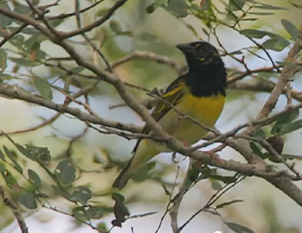
By Leah Temper
A campaign by EJOLT Partner Nature Kenya and other EJOs has saved the Dakatcha Woodland Important Bird Area (IBA) from destruction from biofuel crops after Kenya’s National Environmental Management Authority (NEMA) rejected clearance for a pilot project over 10,000 ha.
The Italian owned company Nuove Iniziative Industriali Srl, through a local subsidiary called Kenya Jatropha Energy Limited, had proposed converting 50,000 ha at the Kenya coast into Jatropha curcas plantations. The 32,000 ha Dakatcha Woodland is within the proposed plantations. The Dakatcha Woodland is located 40 kilometers North of the coastal town of Malindi and is home to rare and globally threatened birds. It is also home to over 20,000 people and is the ancestral land of the indigenous minority Watha and Giriama tribes. The plantation would not only have evicted the tribes from their land, but would also have uprooted their sacred burial sites.
The EJOs further contended that the local council has betrayed the trusteeship of the land by agreeing to irregularly allocate the land, held in trust for the benefit of the community, to the Italian private developer, in disregard of the needs of local people and biodiversity. The groups also pointed to Kenya Jatropha Energy LTD’s unprofessional and irresponsible behavior by starting the project and clearing forestlands against the law without the proper clearances.
This move by NEMA is an important step in the fight against the widespread implementation of Jatropha Curcas in Africa. Jatropha has become a controversial biofuel. While proponents argue that the crop is resistant to drought and pest problems, critics contend that the biofuel, as with many first generation biofuels, may actually produce more greenhouse gas emissions than burning fossil fuels if it is grown over natural ecosystems, such as the Dakatcha Woodlands and that it needs more water than maize to produce a good crop of oil seed and is subject to many pests and diseases.
A study commissioned by Nature Kenya, the Royal Society for the Protection of Birds and Action Aid reveals that biofuel produced from the proposed plantations at Dakatcha will result in up to six times more carbon emissions than fossil fuels.
Much of the biofuel produced in Dakatcha is destined for Europe because of new European Union targets. The misguided Renewable Energy Directive (RED) requires 10 per cent of transport to be renewable by 2020 and most member states plan to meet this almost entirely through biofuels. To meet this target millions of hectares of land will need to be turned over to biofuel crops. Such land is not available in Europe so the alternative is Africa, driving the rampant landgrab that has seen hundreds of thousands of hectares acquired by foreign companies and governments.
Yet, even as the Dakatcha Woodlands is spared and another British Company, G4 industries, has also pulled out of the Coast region in Kenya, the Tana Delta wetlands area remains under threat by several projects, including one proposed by a Canadian biofuel company, Bedford fuels, to grow 10,000 hectares of jatropha.
“It is heartening to see NEMA’s decisions being guided by science. We now urge NEMA to apply the same criteria to the proposed biofuel plantations in other sensitive areas such as the Tana River Delta,” said Paul Matiku, Executive Director of Nature Kenya (BirdLife’s offshoot in the region), in a press release.
Read more: http://news.mongabay.com/2012/0229-hance_iba_kenya.html#ixzz1nrRQbd9i.

The project ENVJUSTICE has received funding from the European Research Council (ERC) under the European Union’s Horizon 2020 research and innovation programme (grant agreement No. 695446)